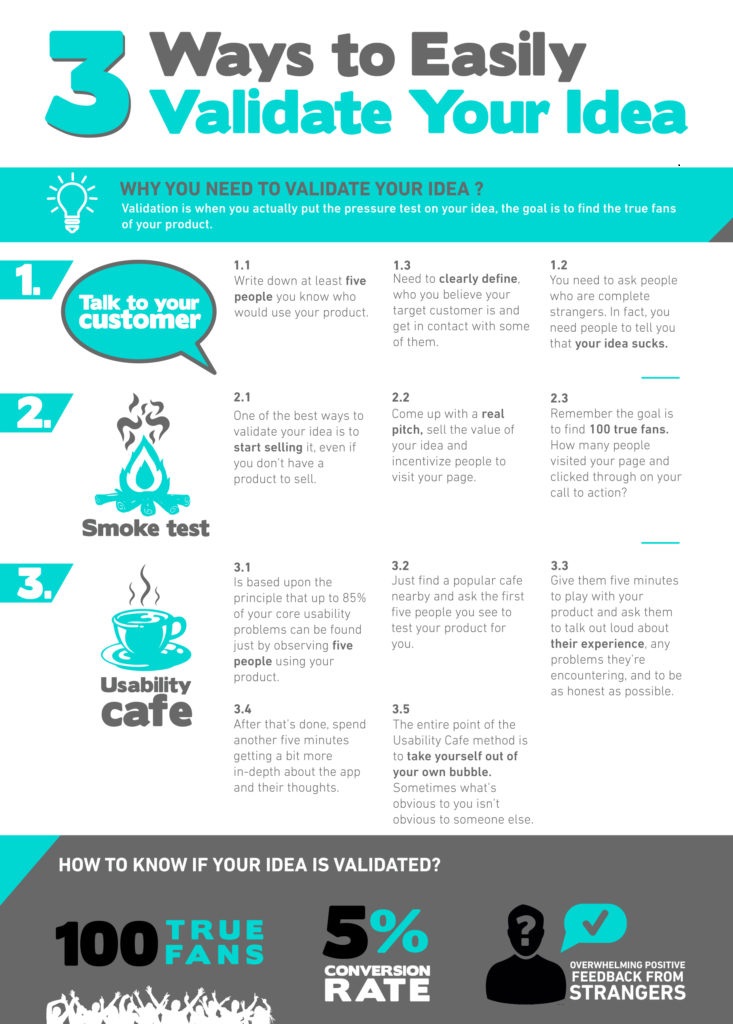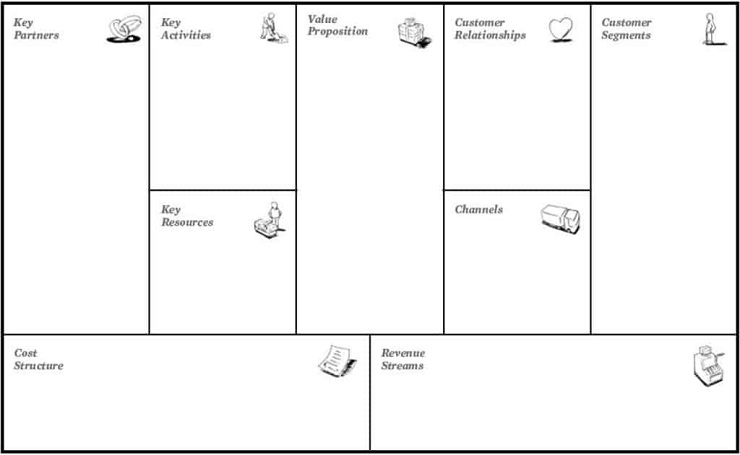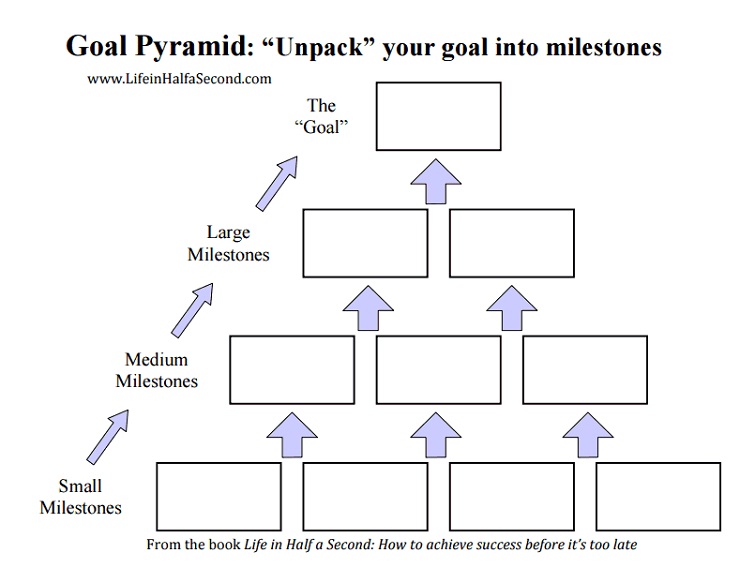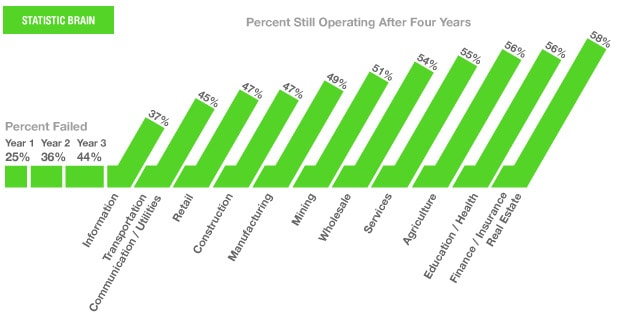We’ve all been there at least once in our lives.
We’ve all had that moment when you’re at work and thinking to yourself, “Is this it?”
That moment when you daydream about the life you should be living and how the job you’re working now is definitely not fulfilling your potential.
But now you’re finally acting on that impulse. You’ve decided to become an entrepreneur. To leave that 9-to-5 grind for a life where you get to work for yourself, and invest your time into something you’re actually passionate about.
You’ve come to the right place, my friend.
But before you barge into work and pull a Jerry Maguire, let’s be absolutely sure that you’re ready to make the transition as smoothly as possible. Making the leap from an employee to a full-time entrepreneur can be a difficult and perilous endeavor if you don’t know what you’re doing.
To get you ready, Foundr has pulled together here a guide to taking this job and shoving it. Follow these steps, and you’ll be in solid shape to take that plunge. So let’s get planning and help you figure out exactly how to quit your job.
How To Quit Your Job And Become An Entrepreneur
Make Sure it’s for the Right Reasons
There are many reasons you would want to become an entrepreneur, from wanting to make an impact to wanting the freedom of owning your own business. But there’s also a number of reasons you should think twice about leaving your 9-to-5.
The fact that you hate your boss doesn’t necessarily mean you should quit your job and become an entrepreneur. The more likely answer is that you need a different boss, or maybe a new job altogether.
Too many times I’ve seen entrepreneurs quit their jobs in a dramatic fashion, only to find themselves wondering what they were thinking two weeks later.
Let’s be realistic here, with a regular day job you have a number of benefits that you might be taking for granted. Things like having a steady income, opportunities to build your own network, and, in many workplaces, your health insurance.
When you quit your job you’re leaving all of these things behind. Remember that.
Now I’m not trying to scare you out of becoming an entrepreneur. In fact, I’d love for more entrepreneurs to be out there in the world, but I do want you to recognize the realities of the situation.
When you make the decision to quit your job, carefully consider what you’re giving up. You have to really ask yourself if your new venture is going to be able to support you in the places where you need it.
Now consider the reasons you want to leave. Sometimes what you’re looking for in becoming an entrepreneur can be found right there in your workplace if you get creative.
Can your needs be fulfilled elsewhere? Perhaps working in a entirely different workplace, or a completely different industry altogether? Why do you feel unsatisfied with your current job? Don’t be afraid to dig deeper and explore the options around you.
The last thing you want is to do is realize too late that all the problems you had with your day job haven’t gone away and now you have the added stress and pressure of being an entrepreneur on top of it all.
One great piece of advice I’ve always held dear is that you should never quit a job over things you don’t like—only for ways you think you can thrive elsewhere. That’s because the things you don’t like in a job are very likely the reasons someone is paying you! That’s the case with all work; it means doing tasks you’d probably rather not do if you had the choice.
That means the top reason behind quitting your job to become a full-time entrepreneur should always be because you truly believe that there is no other calling for you other than to be an entrepreneur. That the opportunities you’re looking for can only be fulfilled by striking out on your own.
“You don’t become an entrepreneur because you want to be rich or famous. You become an entrepreneur because it chooses you. No matter when you make the decision, you know in your gut you just have to go for it.” – Patrick J. McGinnis, author of The 10% Entrepreneur
What’s the Bare Minimum?
It’s all too common for would-be entrepreneurs to get excited and quit when all they had to show for it was an idea. Not a well-executed idea, or even a validated idea, just an idea.
They usually realize very quickly that there’s a lot more to being a successful entrepreneur than just having a great idea.
Earlier I touched on the fact that with a regular job you have a certain amount of security in your life. When you decide to become an entrepreneur, you can either give all that security up and hope for the best, or you can work on your idea on the side.
Personally, I favor the second choice, as you won’t be forced to build a plane as you’re falling through the sky. Instead you can make that leap when you feel ready. It’s not that entrepreneurs don’t take risks, they just don’t take the unnecessary ones.
But whether you hustle on the side first or quit right away, it’s important to figure out the minimum requirements necessary before leaving.

To anyone unfamiliar with the lean startup method, an idea is considered validated when you know that you can find a paying customer based on your idea alone. But in order to do that you need to actually get out there and starting putting in some work to get your idea validated.
That means you want to make sure that you have at least 100 true fans of your idea before your idea can be considered validated. Then you know you’re working on something real. If you don’t have that, perhaps you need to find another startup idea And definitely don’t quit your job.
Once you’ve gotten your idea validated and you’ve started working on your business as a side-hustle, it’s time to grow your business to the point where you can comfortably switch careers without missing a beat.
When our CEO Nathan Chan was working on Foundr on the side, there were three things he needed to make sure of before he made the jump to becoming a full-time entrepreneur:
- The business was making enough money to replace his income
- He had six months worth of savings
- All his mentors and peers were telling him that “it was time”
Take one of those three away, and you can imagine how the foundation for his business might crumble, and an otherwise great idea and even a growing audience might disappear before his eyes. Getting there requires patience.
You don’t have to follow the exact same three requirements as Nathan, and you can figure out what that bare minimum is for you. But for Nathan, those were the marks he needed to hit before making the jump to working on Foundr full time. He kept those locked in his sights and kept hammering away at his job and his business until he could check them off.
Set a Date
Even with your bare minimums in mind, it can still be tough to know when to pull the trigger. It’s all well and good to talk about how you’re going to quit your job, but it doesn’t amount to much unless you actually take action. This is why you need to set yourself a date for when you’re going to quit and actually stick to it.
Research has shown that you’re 91% more likely to complete a goal if you set yourself a definite time and date. It can be incredibly easy to procrastinate on a goal and stay on the fence about something if it doesn’t seem like it’s going to happen anytime soon.
By assigning a deadline and holding yourself accountable, you’re far more likely to stop talking about quitting your job, and actually start working towards it.
That date can be anything you want it to be, from 30 days, to 90 days to even a full year. But before you declare to the world, and to yourself, about how you’re going to be self-employed in the next few weeks let’s make sure that you have a realistic timeline first.
This right here is called a Business Model Canvas.
This is a tool that I absolutely love and cannot help but keep on recommending because of how useful it is. It’s essentially a tool that helps you take a step back and look at your business as objectively as possible. It highlights every essential and key element of your business and can help you consider things about your business that you may not have thought about before.
What you’re looking to do with this template is figure out what your business needs to look like when you eventually quit your job. Fill out every section so you know for sure what you need to be working toward, and what is the highest priority.
Take a look at this quick tutorial on how you can use the business model canvas:
Once you have your business model canvas done, it’s time to start setting some goals and creating a realistic timeline you can work toward. I’ve always found that the best way to do this is through a goal.
The goal pyramid helps you break down your big goal into its smaller and more achievable milestones. By breaking down your goals with a goal pyramid you now have a better understanding of how it is you’re actually going to achieve your goal and what it is you need to do.
Once you’ve completed that goal pyramid you can now start creating a realistic timeline for yourself about how you’re actually going get there.
Don’t Burn Any Bridges
It may be tempting to quit your job in a blaze of glory, setting that annoying photocopier on fire while throwing pads of work stationery at everyone like ninja stars. But let’s try not to get too far ahead of ourselves here.
We can always dream
If you’re absolutely sure that there will be no ramifications from exiting the workforce while shooting staples at Ron-with-the-annoying-laugh, then walk out and don’t look back. But I’m telling you, that’s almost never the case. Generally speaking, most people aren’t going to be on board with your brief moment of catharsis, no matter how epic it may be.
The most important parts of any professional relationships are the bookends—how you start and how you end. You set the tone for how these interactions will go and you certainly want to put in as much effort into your last impression as you would with your first.
Making a mess of things and leaving a terrible last impression is a surefire way to harm your reputation down the line. Especially when you consider the fact that you never know what your former colleagues might end up doing, or that your dormant connections might actually be the most valuable networking tool you have. Nothing happens in a vacuum.
When you reach a point when you’re committed to the decision to leave your job to become an entrepreneur, you should talk to your boss. Put yourself in your boss’s shoes, do you think they’d be happy if they found out that you were thinking about quitting and they were the last person to find out?
That doesn’t mean you should wake up in the middle of the night from a dream about a new app and call work. But you should give plenty of notice, especially if a team depends on you. Leaving suddenly and without much warning, even two weeks notice, can leave many people in a pickle and you can sure you’ll be the one to blame for it.
Letting your company know when you intend on leaving gives them time to possibly hire someone else to fill your shoes, or give you fewer responsibilities as you get closer to the end date. Talking to your boss also gives you a better understanding of your company’s policies. I’m sure you’ve heard of the horror stories]where an employee’s startup idea is taken by the company they’re working for because they used the company’s photocopier once.
I really don’t like this photocopier
Don’t let that happen to you. Talk to a lawyer if you need to, but at the very least get a good grasp of what is and what isn’t allowed at the office.
Besides, letting your boss know that you plan on quitting doesn’t necessarily have to be a bad thing. It’s not uncommon for a company to learn about such plans, be excited for you, and actually help with your transition. You might work out an even better exit plan because your boss might be open to mentoring you, or even reducing your hours to part-time so you can work on your side-hustle more. After all, your new business may even be of value at some point to the company.
Don’t assume the worst because you’re afraid of having an awkward conversation.
At all costs, make sure to leave with your dignity and reputation intact.
Start Working Like an Entrepreneur
As you start preparing to quit your job, you’re going to need to get used to the kind of work schedule that is demanded of entrepreneurs. By developing the healthy habits and routines you need early, not only does it make your productive but it also means that when you do quit your job you can just hit the ground running.
Unlike working a regular job where you can call in sick and take annual leave and still get paid, as an entrepreneur, especially in the early stages, the buck starts and stops with you.
If you’re sick or can’t work it means that means that your business is grinding to a halt. Now this doesn’t mean that you need to start pulling in all-nighters all the time, although you’ll definitely find out how little sleep you can survive on.
But you do need to understand that your most valuable resource from here on out is your: time and energy. Which means you need to learn all the different ways you can start being more productive, and manage your time and energy better starting yesterday.
On a personal level this could mean that you need to paying more attention to your body and its needs. That could mean starting to take exercise more seriously, taking more naps, or even trying to work fewer hours potentially.
Another aspect of working like an entrepreneur is understanding what requires your utmost attention and what things you can potentially outsource. If you can afford it then I’d highly suggest hiring a virtual assistant or taking some time to see if there are any tools and resources that you could use.
Basically you want to make sure that your mental and physical health is always in the best shape possible so you can keep on going.
One other thing you should be aware of is that you will experience a sudden drop in productivity when you leave your full-time job. Don’t be alarmed, it always happens when you experience a sudden change in environment and it always takes some time for your brain to adjust.
When you’re so used to working on your business after hours, it can be difficult to readjust to a new work schedule. Thankfully, though, you can easily start mitigating the time it takes for you to adjust by incorporating those healthy habits I mentioned earlier.
By having a consistent routine that doesn’t change no matter where you work, you’re going to take far less time to readjust to your new schedule.
What’s Your Safety Net?
Entrepreneurship can be very rewarding and can be one of the best decisions you’ll ever make. But let’s also not forget that the reality of entrepreneurship is that it can also be incredibly difficult.
Unfortunately the truth is that, according to the Wall Street Journal, three out of four startups will fail. With statistics showing that only a little over half of all businesses launched will still be operational after the first five years.
Courtesy of Statistic Brain Research Institute
To be an entrepreneur, you have to get used to the idea that maybe everything won’t work out the way you intended. It could be from a lapse in decision-making, or some sort of disaster that’s entirely out of your control.
Either way, when you make the leap from being an employee to a full-time entrepreneur it’ll help knowing that you have a parachute in case something goes wrong.
Courtesy of Entrepreneur Fail
Financially speaking a good rule of thumb is making sure you set aside at least six months worth of savings before you quit your job. But remember, and I can’t stress this enough, these savings are only to be used in case of emergency. You don’t want to quit, decide you need a new computer or a trip to the beach, and start tapping into it.
Regardless of whether or not you’re planning on bootstrapping or getting financed, it’s practically guaranteed that you’ll experience some sort of financial setback at least once. Having that emergency fund will help you smooth over any speed bumps that’ll inevitably show up.
Something else you should start investing time in is to start building a strong network of people around you who’ll support you when you need it. I don’t just mean financially, but people who are going to be able to give you the motivation and expertise you’re going to need.
Create a list of people that you know can help you out in case something happens, from your closest family members to your mentors.
Ask yourself questions like:
- What happens if you’re not making as much revenue as you thought, can you move back in with your parents if need be?
- If you couldn’t land that investor you were going for, do you have anyone else who can introduce you to someone else?
- If you fall sick for a long time, is there someone you can trust to help run the business while you get better?
It might be uncomfortable, but really think about the worst case scenarios you might encounter and who you can turn to in case it happens. Plus after creating a plan of action you’ll probably find out that your fear of failure isn’t as bad as you thought it was anymore.
It’s important you start building this network now, not after you quit, because making connections doesn’t really work when you’re desperate for advice or you need others to save you from disaster. Start building entrepreneurial relationships now and be generous to the people around you while you’re flush.
Are you ready to quit your job?
Quitting your job and making the move to becoming a full-time entrepreneur can be an incredibly daunting task. But when you know that your future lies elsewhere then you should do all you can to chase after it. Just make sure that you look before you leap.
Don’t wait any longer and use this guide to come up with a solid plan for you to leave your job. It might be a little difficult at first, but it’ll certainly be something you’ll thank yourself when you’re about to take that next step.
Are you thinking about quitting your job, or have already taken the leap? What did you do in order to prepare? Join the conversation in the comments below.



























